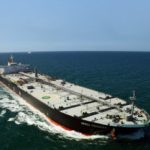Regulatory Compliance Getting More Complicated for Ship Owners in the EU

Shipping industry regulations are about to get more complex in the EU region, with the introduction of FuelEU legislation. In its latest weekly report, shipbroker Gibson said that “with the shipping markets still getting used to the Emissions trading scheme (ETS), the next major piece of EU legislation is on the horizon. FuelEU serves as a critical piece within the intricate puzzle of the Fit for 55 regulations. While the Renewable Energy Directive (RED) and Alternative Fuels Infrastructure (AFIR) focus on creating a new sustainable fuel landscape in the EU over the long term, the ETS and the Energy Taxation Directive (ETD) aim for rapid reductions in greenhouse gas emissions. Positioned between these frameworks, FuelEU is intended to addresses the demand for renewable and low carbon fuels by implementing progressively stringent rules to encourage their uptake”.

Source: Gibson
According to the shipbroker, “the regulation focuses solely on two key objectives: mandating a reduction in the greenhouse gas (GHG) intensity of energy utilized by ships arriving, departing, or staying in the ports of member states, and requiring the use of On-Shore Power Supply (OPS) in these ports for containers and passenger vessels. It sets forth an initial goal of reducing GHG intensity by 2% by 1 January 2025, gradually escalating to an 80% reduction by 1 January 2050, based on a reference value of 91.16 gCO2eq/MJ. The explicit focus on emissions, makes this regulation technology neutral, thereby giving shipowners considerable leeway with regards to choosing fuel technologies”.
Gibson said that “this mandate applies to ships exceeding 5000GT and encompasses 100% of energy usage for intra-EU voyages, with a 50% requirement for voyages to or from the Outermost Regions or other international destinations. While certain exemptions exist, they primarily do not pertain to tankers; exceptions may apply to ice-class ships subject to a distinct calculation mechanism. Additionally, voyages between Outermost Regions are exempted from this regulation”.
“Compliance with this framework follows a Monitoring, Reporting, and Verification (MRV) approach, with additional FuelEU-specific data entered into the MRV database. The compliance process begins on August 31, 2024, requiring companies to submit a monitoring plan to verifiers. Monitoring activities commence on January 1, 2025. The initial monitoring period concludes on December 31, 2025, with ship operators mandated to submit their FuelEU reports to verifiers by January 31, 2026. Verifiers assess compliance by March 31, 2026, and issue the ‘FuelEU Document of Compliance’ by June 30, 2026. Following issuance, all ships calling at European ports must possess this document. If the ship is not complying with the targets set out in this legislation, a penalty will be levied on companies. The penalty will be calculated as follows for ships using VLSFO: Within this mechanism, companies can also pool their performances, allowing the surplus performance of one ship to offset any underperformance within the fleet. Furthermore, there’s the flexibility to bank and borrow surpluses for individual vessels, enabling offsets between surplus and deficit years, thereby providing maneuverability for individual ships concerned as well”, Gibson said.

Source: Gibson
The shipbroker concluded that “while this legislation is comprehensive, its focus appears predominantly on the container industry, as indicated by substantial sections of the legislation and all EMSA case studies solely addressing container emissions. This raises questions about the broader impact on the tanker, bulker and gas shipping sectors, and whether the nuanced nature of those sectors has been taken into consideration while drafting these rules”.
Nikos Roussanoglou, Hellenic Shipping News Worldwide

